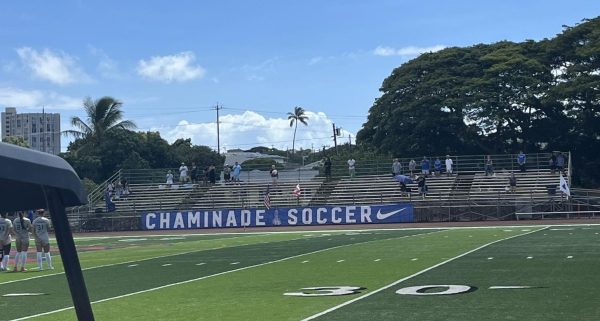Kava Night: A Campus Attraction
Kava King, Kawehiokekai Moefu, shares some Tongan tradition with his fellow classmates.
April 8, 2016
In Spring 2015, Kawehiokekai Moefu and his friends wanted to “mix,” which is slang for kava. But how they do it is, they would “mix” as a group in order to prevent teenagers from going out and drinking or becoming gangbangers.
And so, Kava Night was born at Chaminade.
Every Tuesday at 6 p.m., under the white tent outside Sullivan Library, Moefu (who goes by Wehi) and a group of about six to eight people, start mixing kava and talking story while enjoying the drink.
“Kava Night is about unity,” said Moefu. “There’s no difference in how kava is drunken. At the end of the day you are drinking the same thing, in the same school and a part of the same community.”
Moefu started a gathering of all races, Tongans, Micronesians, Samoans, Hawaiians, and more. They wanted to attract all people without focusing on a single culture. Regulars include sophomore Mark Mansuento, Linden Kohama (president of the Micronesian club), and Claire Paul (president of the Garden Club). Paul usually serves as a tou-a, server or princess. However, Kava Night is open to the public as well as Chaminade students.
Kava night serves to keep students out of trouble and play as a mentorship or a controlled escape. Kids will listen to Moefu and his friends talk, change each other’s perspectives and accept the reality of their actions.

Kava eases pain. It’s a stress reliever, so it calms your nerves. It does all these things so when you’re in a group it takes away your anxiety, your fear of saying something wrong or using bias opinions in front of peers. Kava kind of deters it. It’s good. Kava circles open up a clear conscience for people, throwing topics out and comfortably sharing because they are relaxed. It helps to sort of channel the conversation.
“I think that even though it doesn’t directly affect your mind because it’s so relaxing to your body you’re able to clear your head at the same time,” Mansuento said.
Kava is practiced differently throughout the Polynesian islands in the Pacific. The Hawaiian and Samoan approaches to drinking kava are sacred. They didn’t drink freely but occasionally and with a purpose. However, Tongans and Fijians drink kava habitually, as a social drink, thus Moefu’s idea to use the Tongan approach and bring students from Chaminade as well as outside the college together.
Kava comes from the root of the yaqona (piper methysticum) bush, a relative of the pepper plant. The root is ground up and then Moefu strains it with water into a large plastic bucket. He does this using a clean cloth, twice, for extra purification. He will also add coconut water for those that aquire a sweeter taste. It’s a simple preparation for a simple drink.
It isn’t about a single culture. There are representations for almost every culture. All enjoy one another’s company, the ability to hang out and pick each other’s brains.
That’s what kava does. It’s like an attraction or a way to bind everyone together.




